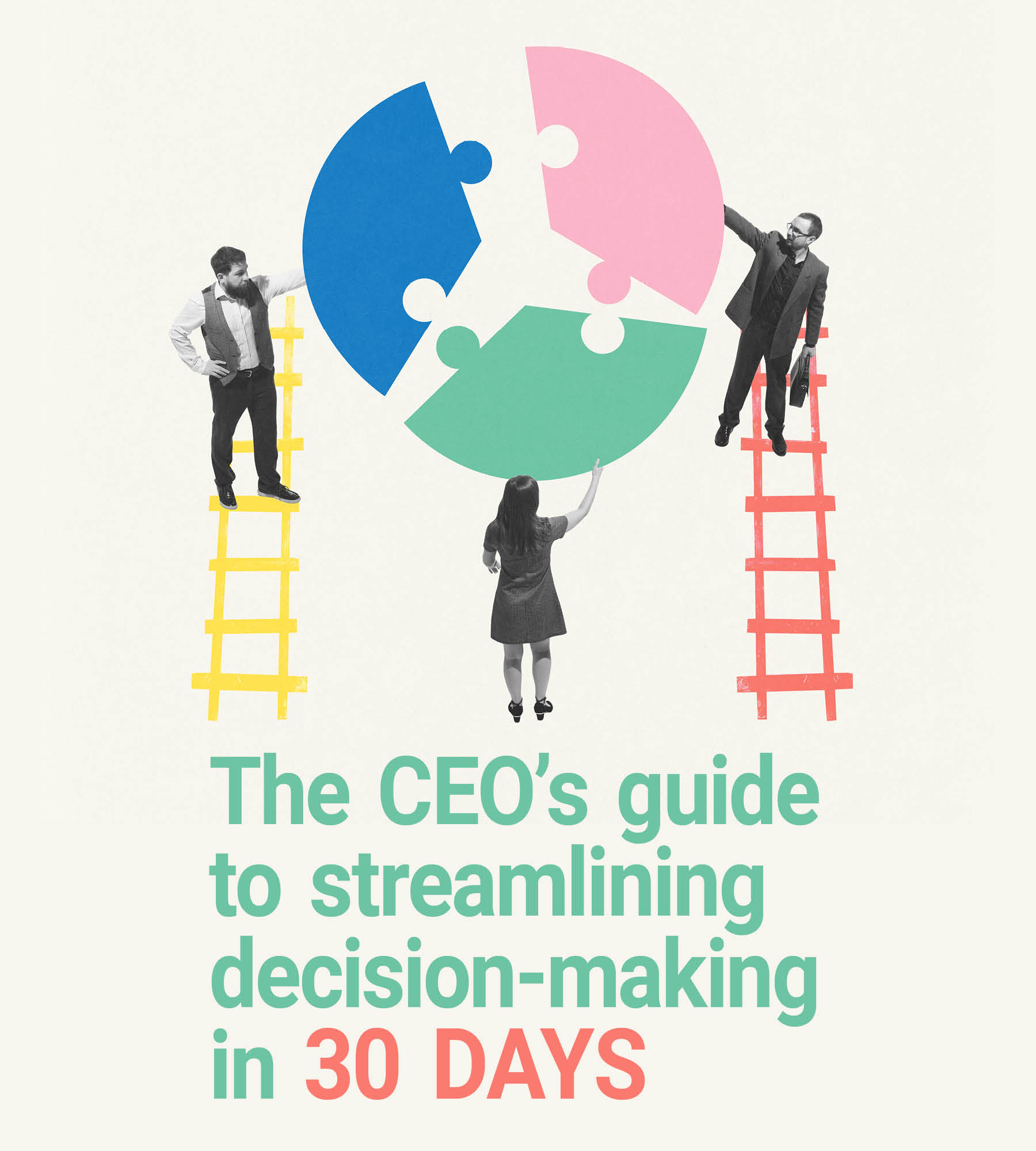Language
You can read the magazine in one of the following languages
Geolocation
You can read the global content or the content from your region

As the CEO, you’re no stranger to the weight of decision-making. But you and your teams don’t want to make it any more challenging than it needs to be. And you certainly don’t want to be perceived as the problem.
There are five key causes of slow, cumbersome and errant decision-making in practically any organizations, with the scale of these challenges increasing in step with organizational size and complexity.
● Incomplete information: It goes with the territory that you often need to make calls without all the facts. However, too often information was available that was either too hard for people to locate or understand or they failed to communicate it clearly.
● Inconsistency: Without a solid framework, decisions can seem arbitrary or contradictory. Customers, suppliers or staff try to get the answer they want by asking various team members, hoping for a different response from each person.
● Bottlenecks: Decisions pile up, creating a logjam that slows down the entire organization. Yes, it can be an overworked individual or team, it could be indecisiveness or it could be the challenge of decisions being made in governance committees. Too many contrary views to get a resolution and it is either parked for now or the team is sent back to try again.
● Authority: Financial delegations are one thing, however, ensuring there is clarity in other areas is just as important. For example, take a moment to identify the board’s appetite for risk in venturing into or out of areas of opportunity.
● Silos: Poor communication between teams. While being a source of incomplete information, it deserves its own callout.
But fear not. Here is a map of your 30-day journey to streamlined decision-making.

Begin by asking each member of the leadership team to map the process their team follows for key decisions that require your sign-off. Focus on the high-level items only, concentrating on data sources, the guidelines already in existence and any inputs required from outside the team. Note the type of decision, time spent and resources used.
This will reveal patterns and pain points you might not even be aware of. If there are obvious bottlenecks, you may see an immediate solution.

Now that you’ve identified a number of patterns, it’s time to confirm delegations. Create the following three categories of decisions and state what defines them.
1. Decisions only you or the board can make: This could be based on financial delegations, sensitivity of stakeholders or potential to impact the culture of the organization as a few examples.
2. Decisions that can be made by team members: These are within the capability of the team and are reversible and less impactful decisions that you can let go and intervene at a later date, if necessary.
3. Decisions that obviously need some improvement through the development of decision support tools, from simple decision trees to more sophisticated data models: The data and experience are available to design tools that will improve quality and speed of decision-making.
By the end of this week, you will have freed up a big chunk of your time.

Implement your new decision-making framework:
● Set up daily 15-minute stand-ups with your leadership team to confirm categorization and the state of flow of decisions.
● Implement the simplest decision support tools and test and improve them by the week.
● Establish projects for development of more advanced decision support tools.
Remember, the goal isn’t perfection – it’s progress.

In the final week, assess your new system. Are decisions being made faster? Is the quality improving? Are the projects you put into train scoped, resourced and prioritized? Gather feedback from your team. Do they feel more empowered, or do they feel vulnerable or overwhelmed?
Make the necessary adjustments but keep going. You and the team will find a happy medium.
You have done very nicely to get to where you are. You are a good decision-maker. You and your team are getting by just fine.
Talking about decision-making is not sexy. In fact, it turns people off. But that’s exactly why you need to do this. It’s hard, smart work that other CEOs won’t embark on. They’re missing an incredible opportunity to improve the agility of their organization – an opportunity now waiting for you.
Are you ready to transform your leadership and your company?

Bryan Whitefield
Contributor Collective Member
Bryan Whitefield, author of ‘Team Think’, has helped thousands of leaders to achieve their goals over a career spanning 30 years in engineering, insurance and management consulting. He has worked with organizations across just about every sector of the economy, all levels of government, not-for-profits and a range of rising-star small and medium enterprises. Bryan was President and Chairman of the Board of the Risk Management Institution of Australasia from 2012–2015 and is the author of three other books. For more information visit https://www.bryanwhitefield.com.au/